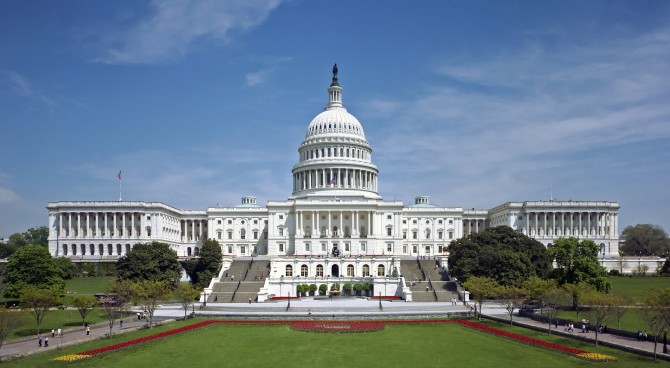By Phil Gramm and Mike Solon
(As published on Wall Street Journal)
Uniting a divided Congress around a major deficit reduction plan was never going to be easy, but it is virtually impossible when the incumbent president campaigns instead of governs and seeks to divide the nation based on how much money people make.
As markets and the media conclude that the congressional super committee on deficit reduction is likely to fail, public attention is increasingly focused on the “draconian†across-the-board cuts that will ensue. A little refresher course on the size of these cuts in the context of the spending spree that occurred since 2007—when the Democrats took control of Congress—is in order.
More importantly, it’s time to look at the fine print of the 1985 Gramm-Rudman Act, which was revived by this year’s Budget Control Act, and the final chance it might give to the next Congress and the next president to do the job right if this president and this Congress fail.
The super committee and the threatened across-the-board cuts were created by the Budget Control Act, which converted the debt ceiling agreement between the president and Congress into law on Aug. 2. It required that debt increases be fully offset by spending cuts over the subsequent 10 years. The first debt limit increase contained in the Budget Control Act capped and reduced total spending by $917 billion. The second debt limit increase will require an additional $1.2 trillion reduction to be accomplished either by the super committee or by automatic across-the-board spending reductions called a sequester—a budget control mechanism from Gramm-Rudman.
If the super committee fails to agree on a budget plan, or if the plan is rejected in Congress or vetoed by the president, the combination of the reduction in spending already made ($42 billion in fiscal year 2013) and the potential sequester ($68 billion in 2013) would reduce 2013 spending by $110 billion, with $16 billion coming from nondefense mandatory spending and the rest split between defense and nondefense discretionary spending.
Across-the-board cuts are clearly inferior to rationally setting priorities, but they’d be far from debilitating. Spending has grown so fast in the last five years that even if the cuts are triggered, total spending in 2013 would still be a whopping $3,579 billion—32% more than projected by the Congressional Budget Office in January 2007. Even after adjusting for inflation, real nondefense discretionary spending would be up $41 billion or 7.6% higher, and real defense discretionary spending would be up $77 billion or 13% higher.
While a sequester would not be the end of the world, even for Washington, happily there is another chance to get this right. When Congress passed the Budget Control Act setting up the sequester process, it also repealed the expiration dates in Gramm-Rudman, bringing back to life provisions enabling the president and Congress to propose alternatives after the sequester is ordered. Gramm-Rudman never intended across-the-board cuts to be used for anything other than a prod to action and an impetus to force hard decisions lest the dreaded sequester be unleashed on the programs Congress cherished. We also knew Congress would do the right thing only after it had exhausted every other alternative, which would take time. So we gave Congress and the president a few last chance opportunities, after the sequester was ordered, to come to their senses.
When the Budget Control Act brought Gramm-Rudman back to life, the final alternatives to the across-the-board cuts were restored, allowing the president to submit a resolution reordering the Department of Defense sequester to shift reductions among defense accounts. This resolution is highly privileged, and while it can be amended, it cannot be filibustered. This option—when combined with the unilateral power the president already has to protect defense personnel accounts from the sequester and the ability of the president and Congress to reduce other spending in lieu of defense spending—should be sufficient to protect our effort in the global war on terrorism.
But the most important Gramm-Rudman provision revived by the Budget Control Act provides that 20 days after the final sequester order, the majority leader in either house of Congress may proceed to consider a joint resolution that can “modify†or “provide an alternative†to the sequester order. Such a resolution can be amended only with relevant amendments, debated for only 10 hours and can’t be filibustered.
As is always the case with complex legislation, there will be parliamentary debate as to whether the revived Gramm-Rudman process applies to this particular sequester, based on the frivolous argument that the sequester does not require various reports to be filed prior to the cuts going into effect. The old Gramm-Rudman sequesters were triggered by the filing of such reports. Republicans will argue that the reports are a technicality and that the intent of the Budget Control Act in explicitly bringing Gramm-Rudman back to life when it employed the sequester as an enforcement device is clear. Democrats will likely argue that the sequester following the failure of the super committee is so unique that the Gramm-Rudman post sequester procedures do not apply. But given the clear intent of the Budget Control Act, their argument will be weak.
President Obama insisted that if the super committee failed, the sequester cutting $68 billion in 2013 had to occur after the 2012 election, in the next administration. As written, if a sequester is triggered, it would occur on Jan. 2, 2013. If Republicans win a majority in the House and Senate they could use the provisions of the revived Gramm-Rudman Act to replace or modify the 2013 sequester with entitlement reforms or other changes in discretionary spending. Their plan could not be filibustered and would pass with a simple majority vote. The savings achieved would be in effect for only one year.
The resulting empowerment of a new Republican Congress and a new Republican president would be profound. Rather than having to first adopt a budget, delaying real action until the summer or fall of 2013, a new Republican Congress could de-fund ObamaCare immediately and begin to reform entitlements for a year during which they could adopt a budget and use reconciliation to make these and other reforms permanent with a simple majority vote.
In his effort to put off the difficult decisions of governing until after the election, President Obama has made it possible for a new Republican Congress and a new Republican president, not tied to the mistakes of the past, to begin the repeal of ObamaCare and restore fiscal sanity the moment the new president’s hand comes off the Bible on Jan. 20, 2013.
If the super committee can write a good plan it should do so now, but it should not take a bad deal that could hurt the economy and further Hellenize America’s debt crisis. Help, committee members should bear in mind, is just an election away.
Mr. Gramm was co-author of Gramm-Rudman and a U.S. senator from Texas from 1985-2002. Mr. Solon contributed to the passage of Gramm-Rudman as a staffer for the House Republican Study Committee.



